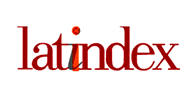CONVERSA SOBRE PROCESSO ELOGIO AO ART. 942 DO CPC O USO SAUDÁVEL DA TÉCNICA
Keywords:
brazilian procedure code, non-unanimous judgment technique, healthy useAbstract
This script presents study based on the range of the innovating non-unanimous judgment technique, addressed on article 942, of the Brazilian Procedure Code, presenting the hypothesis of its admissibility, not only regarding appeals, rescissory action and interlocutory appeal, but also in judgments of appeal requesting clarification of the decision and writ of mandamus. By the end, suggestions are made for healthy use of the nonunanimous judgment technique.
References
Cappelletti, Mauro; Garth, Bryant, Acesso à Justiça. Porto Alegre: Sergio Antonio Fabris Editor ,1988. Greco, Leonardo, Instituições de Processo Civil, Vol III, Rio de Janeiro: Forense , pág 188 Elpídio Donizetti, Curso Didático de Direito Processual Civil, 2016, p. 1478 Marinoni, Arenhart, Mitidiero, Novo Código de Processo Civil Comentado, 2016, p. 1005 Sampaio, José Roberto de Albuquerque, A Simplificação do Processo, , Rio de Janeiro: Espaço Jurídico, 2011, pág 177
Downloads
Published
How to Cite
Issue
Section
License
Authors who publish in this Journal agree to the following terms:
- Authors retain copyright and grant the Journal of Constitutional Research the right of first publication with the article simultaneously licensed under the Creative Commons - Attribution 4.0 International which allows sharing the work with recognition of the authors and its initial publication in this Journal.
- Authors are able to take on additional contracts separately, for non-exclusive distribution of the version of the paper published in this Journal (eg.: publishing in institutional repository or as a book), with a recognition of its initial publication in this Journal.
- Authors are allowed and encouraged to publish their work online (eg.: in institutional repositories or on their personal website) at any point before or during the submission process, as it can lead to productive exchanges, as well as increase the impact and the citation of the published work (see the Effect of Open Access).


















